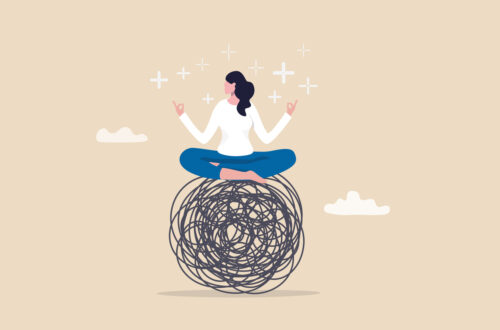Poses in the BPY Flow – Bringing Backbends into your Practice
Chakrasana, Wheel pose, Upward Facing Bow, or Urdhva Mukha Dhanurasana are all names for the family of asanas (poses) that are backbends.
Typically, in the BPY flow, we work on moving towards Upward Facing Bow in our backbends, but in today’s blog we will look at the difference between this pose and Chakrasana as well as what we are trying to tap into by undertaking these postures.
In Upward Facing Bow, we keep our hands and feet apart, but in Chakrasana the yogi works towards walking the ands close enough to grasp the ankles. When the hands and feet connect, the body represents a circle. Achieving this posture allows the yogi to complete our internal energy circuit, which begins at the base of the spine and ends at the energy center at the crown of the head. In Ashtanga yoga practice, chakrasana is a transitional movement moving the yogi from halasana (plow pose) to chaturanga dandasana (four-limbed staff pose) and demonstrates chakrasana in the body as the turning of a wheel from one pose to the next.
The mythology of this pose traces back to Vishwakarman – the architect of the universe in the Hindu tradition. Vishwakarman beautiful daughter Sanjana (think moon) fell in love with Surya (think Sun). This proved to be a challenge for the couple as Surya’s rays were so bright that Sanjana could not get close to him. Daddy’s little girl was not to be outshone or lose the love of her life! Vishwakarman devised a plan to shave off some of the Surya’s blinding rays so that his daughter could get close to her beloved. This allowed Surya’s rays to fall to the Earth and as they did, Vishwakarman collected them and made them into a huge chakra (spinning disk), which drew them Sanjana and Surya closer together and made their love stronger making them inseparable.
Our internal energy centers and circuits were first talked about centuries ago in the Hatha Yoga Pradpika. This ancient yoga text is the earliest writings about how the yogi can use their body to tap into our internal calm and focus the mind. In this text, seven chakras are described and their role in leading to higher states of consciousness. As modern day practitioners beginning or developing our yoga practice, we can start to notice these energy centers as any imbalance may manifest itself physically. Difficulty balancing in standing poses or even getting a lump in your throat in the middle of a conversation are cues that something inside of ourselves is amiss and our body is trying to tell us. Here is a brief rundown of our 7 Chakra system (these are the main chakras in the body – there are others):
Muladhara Chakra (Root chakra): Located at the base of our spine with extension into our legs and fee, this chakra takes care of our basic issues in life. Things like stability at home, relationships with others and how we relate to things like finances. Physically, it governs the systems of elimination in the body.
Svadhisthana Chakra (Sacral chakra): We find this energy center below the navel. Representative of our relationships, our gut instincts and our ability to be tapped into the creative side of our personalities, the sacral chakra is very connected to our sexual relationships in particular. In practice, hip opening postures are helpful in creating openness and releasing old hurts and traumas.
Manipura Chakra (Solar Plexus Chakra): This chakra represents the ego and how we show up in the world It is located in the center of the spine. Physically, imbalances in the digestive system are governed by the Manipura chakra, and twisting postures help by writing out the organ and the ego.
Anahata Chakra (Heart chakra): Containing both masculine and feminine energy, the heart chakra is located in the chest and extends into the arms and hands. This is our connection to compassion and unconditional love. Our ability to forgive lies here. Breathing and cardiovascular health also flow from this energy center. Backbending helps to balance this chakra by releasing fear and hurt and inviting in love.
Visuddha Chakra (Throat Chakra): We find this at the throat, but it also includes the ears. So not only does this chakra govern your speech but also the ability to be a good listener or not. Our thyroid and cervical spine are the physical manifestations of this chakra. Poses that call for the chin to be tucked toward the chest help aid in balancing this chakra.
Ajna Chakra (Third Eye Chakra): Located between the eyebrows, Ajna chakra is the key to unlocking our intuitive nature. Helping us to see things as they are and as all things being connected, pranayama practice and child’s pose bring balance and direct energy to this center. The pituitary gland is the physicl manifestation of this chakra.
Sahasrara Chakra (Crown Chakra): This last chakra is at the top of the head and represents a connection to a source greater than ourselves. Yoga does not ask the practitioner to believe in anything specific, so if religion or God is not in your belief system, than connect this feeling to that of a greater good. The pineal gland is ruled by this chakra.
That’s a lot of info! Here’s a tip to incorporating this knowledge into practice –
Just pay attention. Notice where you lose your balance. Where are you stuck? Collect your data from your body – your own personal GPS system – and then using the knowledge of our 7 Chakra system, begin to implement practices that help bring balance.
Poses like Chakrasana or Upward Facing Bow are lifelong journeys of physical and metaphysical exploration. Start at the foundation of this posture – your hands and feet. Just as eating healthy is the foundation of a strong body or choosing the right partner is the beginning of a beautiful family, we start with the basics and work from there.




